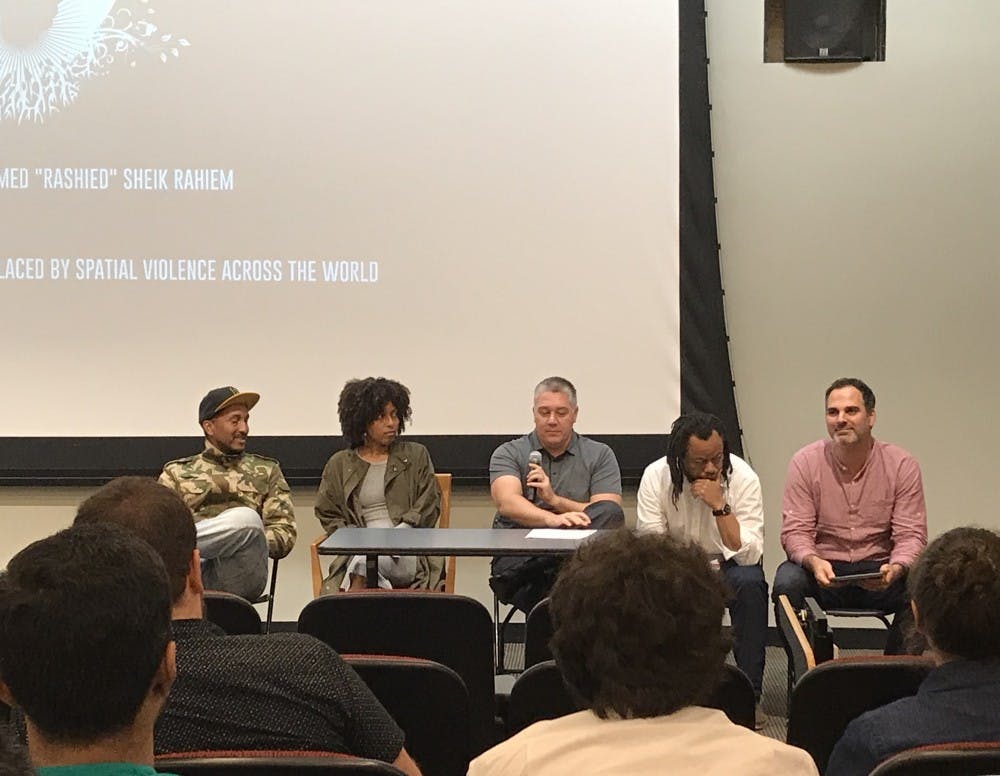Gentrification is the process of turning a neighborhood to a middle-class, affluent living space through renovation. This essentially means that the less affluent community members living in those neighborhoods are displaced due to rising rents and the influx of wealthier people. Most people have no doubt nor second thoughts on such seemingly well-intentioned improvement.
However, after watching Not in My Neighborhood and attending the panel discussion with the award-winning South African director, Kurt Orderson last Friday at Hodson Hall, I reconsidered the effect of such a radical transformation.
The documentary first shows gentrification in District Six of Cape Town, South Africa. Due to the influx of tourism and capital, developers were going to turn District Six into a commercial area and force tenants of the old neighborhood out. These tenants had already lived there for several decades and had knitted their social web. Radical relocation meant more than just the loss of their homes. Without any warning or alert, the landlord agreed to sell the land, which led to a legally enforced eviction of all the tenants.
“Big business runs the world, that’s it,” one tenant said. “And everything is about money nowadays.”
Indeed, as the cities attracted new businesses, capital, corporations and tourists, the demand for better neighborhoods and the cost of housing ballooned. However, who should bear the bruises caused by the change?
The scene quickly shifted to New York, presenting the issue of spatial apartheid and racial discrimination. Wealthy people worldwide come to the Big Apple, bringing loads of cash with them. At the same time they have inflated the price of goods, disrupting the ecosystem that has long existed. One incident the documentary chronicled was the story of a shop located in front of an affordable housing building: It was facing the fate of possible reconstruction.
The commercial area was unprotected by the law, so under the tsunami of gentrification, people had to move out and start their businesses elsewhere. Shops were shut down due to newly established luxury condos, and the neighborhood was organically expelled. People expressed with resignation that capitalism was behind this manifestation of “Christopher Columbus Syndrome.” This is just one example of the gentrification that happens in cities everywhere.
Another terrifying prospect that goes along with capitalism is racial discrimination. Some people have noticed that with gentrification, there has also been an increase in policing. In Flatbush, N.Y., people campaigned with Equality for Flatbush, an organization created in response to this increase in police harassment.
In addition to these efforts, Copwatch is a network of activists that documents and monitors police activity on the street. Activists created it to eliminate police brutality and misconduct.
Last but not least, the film moved to São Paulo, Brazil. Under article six of Brazil’s Constitution ratified in 1988, citizens of Brazil are reaffirmed the right to housing, food, health, education, security and assistance for people in poverty.
However, the existence of Prestes Maia is an ironic symbol of the corrupted political system in place there. Prestes Maia is the largest high-rise building in South America with people occupying it illegally, otherwise known as squatting. It has an estimated 2,000 inhabitants.
Brazil is infamous for having some of the worst land and wealth inequality in the world. Many people live in poverty. Pressured by the surging value of goods, they need to find a way of living. One woman living there said that tenants at Prestes Maia are there because they have to be.
“We are workers, not bums,” she said.
The cause behind the problem is the housing deficit in the ill-designed urban planning system. Rather than expanding opportunities for the wealthy few, the goal should be building an affordable and sustainable ecosystem for the ones in need.
The ending of the film soothed the audience slightly by announcing the successful attempts that people have made in fighting for their rights. Seeing these baby steps being made by activists, I walked out of Hodson Hall informed, troubled and worried about issues that had previously simply been out of my mind. I was pensive and silent.
Not in My Neighborhood documents the intergenerational experiences of gentrification, spatial apartheid and spatial violence. It has merit in asking audiences to empathize with people who want aid, and it emphasizes the underlying issues of bigotry in urban planning that shatter people’s lives. Perhaps we have been pursuing superficial urbanization too rapidly; perhaps we have never been really aware of the dire needs of people who ask for help; or perhaps we have been too ignorant.





